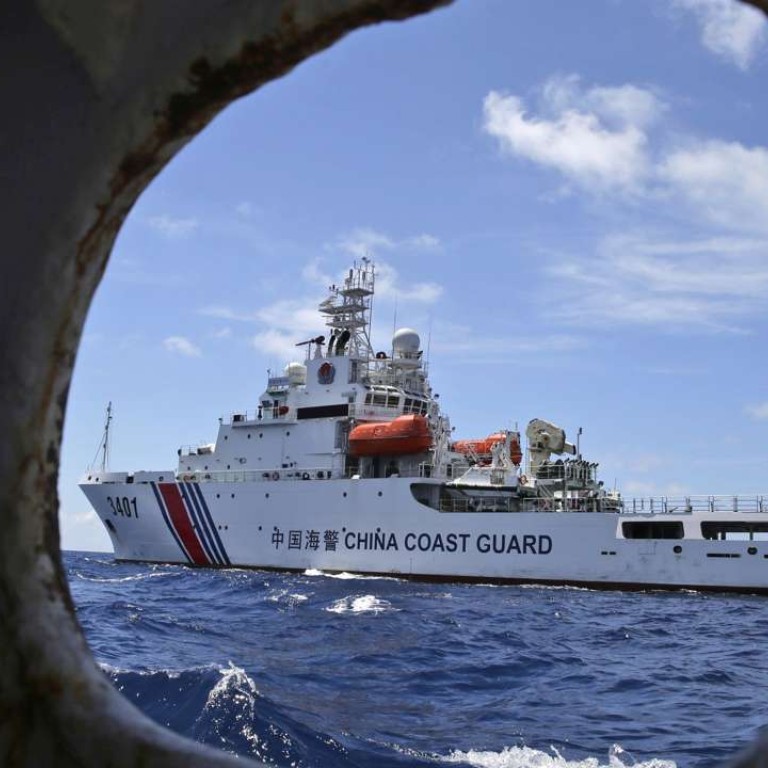
What next for China and the Philippines in the South China Sea dispute?
Zha Daojiong says in the wake of the arbitral award, it’s up to the two nations involved to negotiate a settlement, with binding rules to guide the use of the seas
On July 12, the arbitral award in a case brought by the Philippines against China over a territorial dispute in the South China Sea was made public. In a procedural sense, it marked the end of the case. But its political and practical implications are just beginning and are far from certain.
In hindsight, China had the option to simply keep quiet about the case, as most other states in similar situations have done. But it did not. Through various spokesmen, the Chinese government repeatedly said it did not accept the arbitral process as valid and would not participate in it, and that it would not recognise its decisions or implement any of its demands.
Just empty talk? Philippines’ Duterte is playing China off against US on arms purchases, analysts say
Furthermore, in the months before the release of the award, governments around the world were asked to voice a position in support of either China or the Philippines. The episode spoke volumes about geopolitics intruding into what was normally understood to be a process of law.
In the wake of the award, China and the Philippines remain the primary actors to decide what to do about it. Notably, a formal agreement between two sovereign governments over ownership and rights is an accepted means of resolving a territorial dispute. Reaching that agreement may involve protracted negotiations, no doubt with supporters and detractors from near and far trying to influence them. But, in a strategic sense, it is of benefit to both countries to ignore the demands of these two sides.
Both littoral and user states have a shared responsibility to prevent such disruptions from taking place again
Given that the foundations of political diplomacy between Manila and Beijing have traditionally been weak, it would be advisable for them to deposit with the United Nations any agreement pertaining to their disputes over the South China Sea. Doing so could help lock out future distractions, including from domestic sources. They should learn from China and Britain, which deposited their 1984 joint communiqué on Hong Kong’s future with the UN.
The South China Sea has also become a major dilemma for the Association of Southeast Asian Nations, a collective entity that has thrived on speaking with one voice over major issues in and outside the region. The award does little, if anything, to change the self-interest of each Asean member. Some Asean states, other than the Philippines, may take advantage of the ruling – on historical rights, for example – and argue against other claimants in the South China Sea. Others will continue to be asked to take a position on an issue of no direct national interest.

South China Sea code of conduct is essential for regional peace and stability
So far, the grouping has found ways to avoid breaking apart on the South China Sea issue. It is important that both China and Asean continue to be in the driver’s seat in dealing with regional challenges.
Geographically speaking, the South China Sea is an international passage, on the ocean and in the airspace above. In the past, unilateral interdiction of non-military shipping through the waters did in fact take place. Lost in the voluminous rhetoric about security in the South China Sea is the fact that both littoral and user states have a shared responsibility to prevent such disruption from taking place again and to come up with rules for holding those responsible for such behaviour accountable. Today, discussions are focused on “unplanned encounters” by navies or air forces that just show up at their own convenience.
This shouldn’t be the case. As a matter of fact, international law makes a distinction between littoral and user states when it comes to claims of rights in governing waters connecting the high seas and sovereign areas. That distinction is clear and binding for states and actors wanting a role in governing, say, the Arctic Ocean, another semi-closed ocean serving as a vital passage for international navigation. But in deliberations on governing the South China Sea, that distinction has somehow been lost.
Would a return to such basics in international law be useful? If the recent past is an indicator, a littoral/user state distinction in approaching the South China Sea may well serve as a conveniently useful climbdown for those who sincerely want to see tensions reduced.
Zha Daojiong is a professor at the School of International Studies and the Institute of Ocean Research, Peking University

